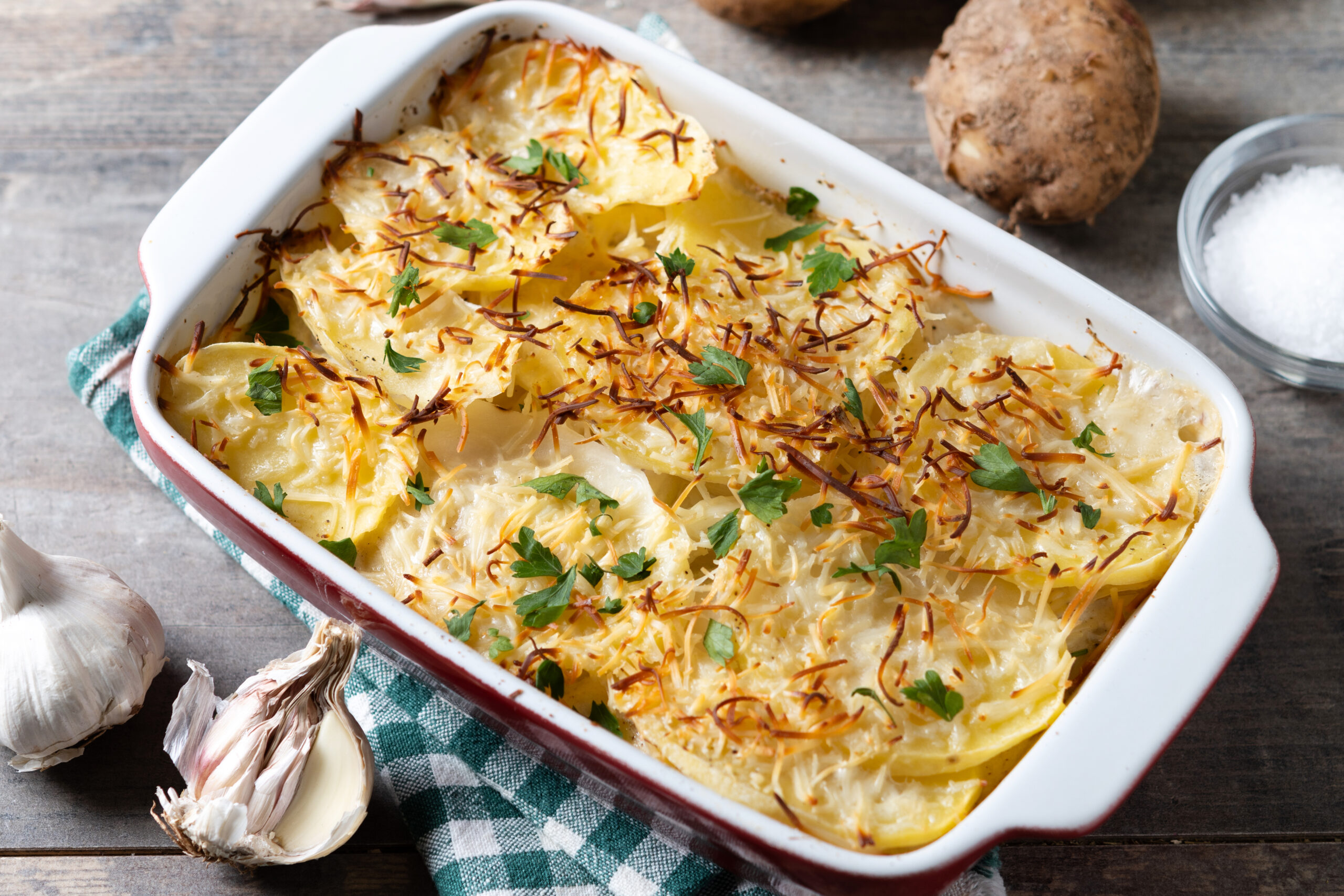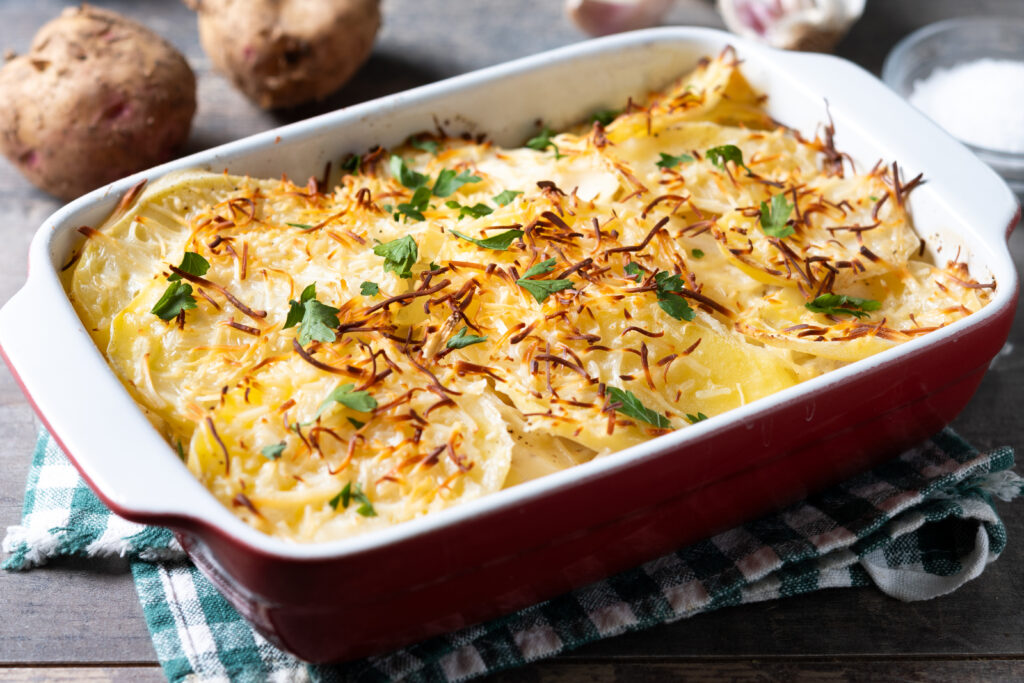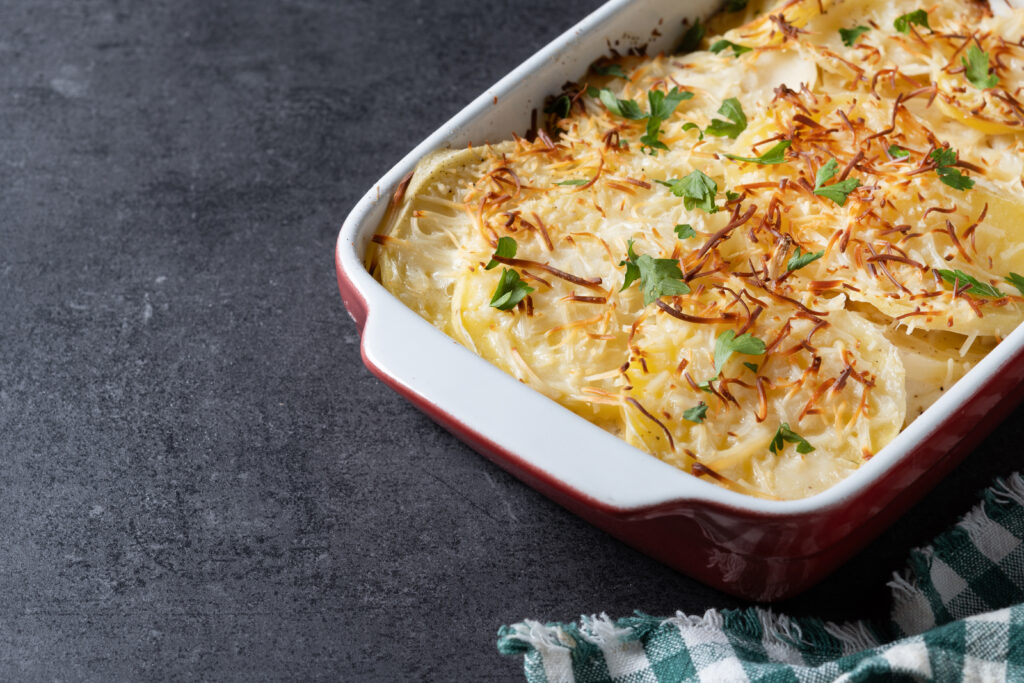Thanksgiving Day Conversation Starters to Inspire Gratitude


Scalloped potatoes are a beloved comfort food, gracing tables at family gatherings and holiday feasts with their creamy, cheesy allure. This dish, with its tender layers of potatoes enveloped in a rich sauce, is a testament to the magic that simple ingredients can create when combined thoughtfully. Whether you’re an experienced home cook or a kitchen novice, mastering the art of scalloped potatoes is both rewarding and deliciously satisfying.

Creating the perfect scalloped potatoes involves a combination of selecting the right ingredients and employing the right techniques. Understanding these fundamentals will ensure your dish is creamy, flavorful, and perfectly cooked.
Uniform slices are crucial for even cooking. Use a mandoline slicer for consistent thickness, ideally around 1/8 to 1/4 inch. This ensures that each potato layer cooks at the same rate.
A roux-based cheese sauce is the foundation of creamy scalloped potatoes. Begin by melting butter and whisking in flour until golden. Gradually add milk or cream, whisking constantly to avoid lumps. Once thickened, stir in cheese for a smooth, velvety finish.
The type of potato you choose affects the texture and flavor of your dish. Yukon Gold potatoes are often preferred for their buttery flavor and ability to hold their shape. However, Russet potatoes can also be used for a softer, more tender texture.
The key to a good cheese sauce lies in its smoothness and flavor. Using freshly grated cheese prevents clumping and ensures a silky texture. Cheddar is a classic choice, but Gruyère or Parmesan can add depth and complexity.
It’s important to balance the richness of the cheese with seasoning. A touch of nutmeg or mustard can enhance the sauce’s depth, while salt and pepper bring out the flavors of the cheese and potatoes.
Layering is more than just stacking potatoes. Start with a thin layer of sauce at the bottom of your dish to prevent sticking. Alternate layers of potatoes and sauce, ensuring each slice is coated. This method allows the flavors to meld together beautifully as they bake.
While traditional scalloped potatoes are delightful, variations can add excitement and cater to different tastes. Here are five variations to try, each with its unique twist.
This traditional recipe highlights the creamy, cheesy essence of scalloped potatoes.
Add aromatic depth with fresh herbs and garlic.
Crispy bacon adds a savory crunch to this variation.
A plant-based twist using non-dairy ingredients.
Introduce a kick with chili peppers or hot sauce.
The choice between heavy cream and milk affects the richness of your dish. Heavy cream results in a richer, thicker sauce, while milk offers a lighter texture. For a balanced approach, consider using a combination of both.
Timing is crucial to ensure your potatoes are tender but not overcooked. Bake at 350°F (175°C) for about 60-75 minutes. Cover with foil for the first half, then uncover to allow the top to brown.
Even seasoned cooks can encounter pitfalls when making scalloped potatoes. Here are common mistakes and how to fix them:
If your potatoes are not fully cooked, slice them thinner and extend the baking time.
To prevent curdling, avoid high heat and ensure the sauce is well-mixed before baking.
If your dish is dry, increase the amount of sauce or add a splash of milk or cream before baking.
Scalloped potatoes are versatile and pair well with a variety of dishes. Serve them alongside roasted meats, such as chicken or beef, or with a fresh green salad for a balanced meal.

Leftover scalloped potatoes can be stored in an airtight container in the refrigerator for up to three days. For longer storage, freeze individual portions wrapped in foil and placed in a freezer bag. Reheat in the oven at 350°F (175°C) until warmed through.
A great scalloped potato recipe balances flavor, texture, and ease of preparation. Look for recipes with clear instructions, a harmonious blend of ingredients, and tips for achieving the perfect creamy texture.
Christy Denney and Jessy Freimann, renowned for their culinary expertise, emphasize the importance of patience and precision. They suggest pre-cooking slices for a head start and experimenting with different cheeses for unique flavors.